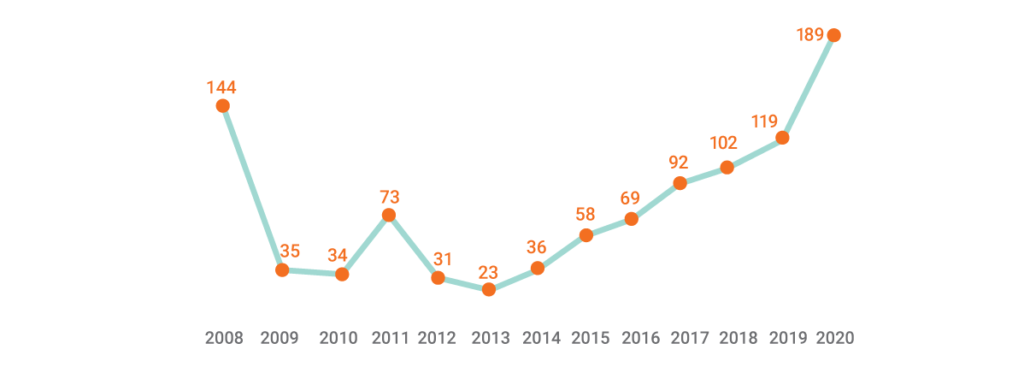In 2000, the Serbian media system began a slow and, as of today, unfinished transformation. This transformation included several main elements: 1) withdrawal of the state from media ownership, 2) transformation of state television into a public media service, 3) formation of an independent regulator in the field of electronic media, 4) introduction of measures that encourage media pluralism and diversity of content and 5) providing conditions for the realization of freedom of expression.
The adoption of media laws that prescribed these elements was accompanied by simultaneous processes that made fulfilling these goals impossible. The state reluctantly relinquished its role as a media owner and media regulator. The need to exert political influence in the media sphere, along with a low level of journalistic professionalism and impoverishment of the media market, led to non-transparent, clientelistic relations between government and the media. Media capture by the state has become increasingly evident since 2014, when pressure on journalists and media outlets that are not part of clientelistic networks began to grow. The overall impact of these processes is seen in the lack of media pluralism and media freedoms.
After a period of a relatively slow, but constant rise on international media freedom lists, Serbia has had a significant drop since 2014. According to Reporters Without Borders, Serbia dropped from 64th place in 2008 to 90th place in 2019.

Citizens of Serbia have very little trust in the media. Compared to the European average of 39% of citizens who trust the news, in Serbia that number is only 20%. The cause for this absence of trust and the decline of media freedom is found in many areas of the media system: a non-reactive media regulator, the fact the public media service is unable to reach complete independence, lack of media pluralism, as well as the ever growing pressure on journalists and the media in general.

An independent regulator in the field of audio and audiovisual media was introduced in 2003, and started operating in 2005. Until 2014, the regulator was called the Republic Broadcasting Agency (RBA, Serbian RRA), and today it is the Regulatory Body for Electronic Media (REM). From the very beginning, the regulator failed to achieve the necessary independence, both in organizational and financial terms, as well as in the implementation of its competencies.
Two public media services – Radio Television of Serbia (RTS) and Radio Television of Vojvodina (RTV) – were formed with a delay in 2006. The regulations ensure the autonomy and editorial independence by financing and the manner of electing the members of the managing boards, who elect the executive director. The task of satisfying the wishes of listeners and viewers in regard to the program content is entrusted to the program councils. Designed to enable media services to take on the role of public interest bearers in the media system, these mechanisms have never fully taken flight. The members of the management boards are elected by the REM Council, and the organizational (in)dependence of REM is in direct relation with the organizational (in)dependence of RTS and RTV. Instead of protecting the independence of media public services, the managing boards have repeatedly obstructed their work. When it comes to media content, relevant analyses show that RTS and RTV news programs do not meet the standards and requirements related to impartial reporting, diversity and social inclusion.
The system of public information is moving to digital space, but it cannot be said that the expansion of digital communication has had exclusively positive effects on media freedom and pluralism of opinion in the virtual public sphere. Although the number of Internet users is growing, there is still a digital divide. The Internet, on the one hand, has provided a platform for excellent research newsrooms and enabled a richer offer of media content for groups that have been neglected in traditional media. On the other hand, online media that serve as party media have also multiplied. In addition, opportunities for covert influence on public opinion have opened up, and the Internet as a channel is often abused to intimidate and spread hate speech.